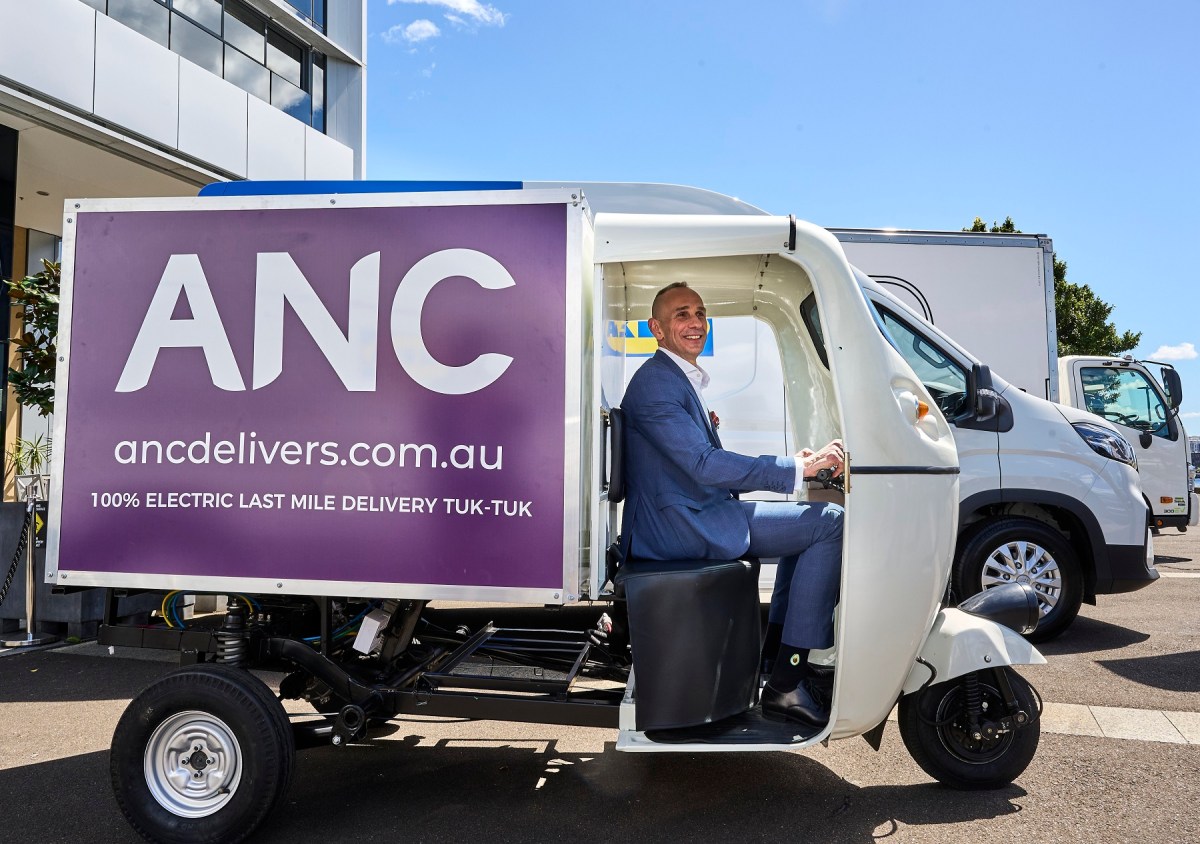Last-mile delivery specialist, ANC has introduced Australia’s first three-wheeled electric TukTuk, designed specifically for last-mile delivery. The company announced a strategic partnership with Brisbane company, EMoS to become the exclusive importer for Australia and New Zealand.
The three-wheeled, open-cabin electric vehicle is Australia’s first fully electric last-mile delivery model incorporating battery swap capabilities. Built by sustainable mobility brand, BILITI Electric, the TukTuks are already being used for last-mile delivery operations in Asia, Europe and, in coming months, the US.
ANC CEO, Joe Sofra said, “The introduction of these battery-powered e-TukTuks to our EV fleet is an integral milestone in our journey to realising our sustainability objectives. It’s a functional electric delivery vehicle that’s easy to charge and has plenty of cargo space despite its smaller size. Their low price point allows rapid EV fleet expansion. We’re proud to be leading the way in Australia.”
EMoS director, Harry Proskefalas commented, “The e-TukTuks show great promise for last-mile delivery in Australia. They were introduced into the European market predominantly for parcel and postal delivery, and national couriers are now adopting them.
“EMoS has received import approval and is currently undergoing homologation to the federal government’s Australian Design Rules (ADRs) and Road Vehicles Standards Act (RVSA) 2018, for full volume compliance to be used on all local roads nationally. We are excited about the potential.
“These next-generation EVs are sophisticated, technologically advanced vehicles that are digitally connected, can be monitored via smartphone apps, have decent range, are easy to charge, and safe and simple to drive. They’re also three-to-five times more energy efficient than conventional internal combustion engine vehicles. They fit the bill for just about any urban application and provide a greener solution for last-mile delivery.”
Proskefalas added that the ability to swap out batteries or recharge them relatively quickly from a regular socket has another huge benefit.
“It also tackles the problems of range anxiety and charging point infrastructure. Downtime and making sure that the commercial application of the vehicle supports productivity is high on our radar. These vehicles can be charged from a standard plug or batteries can be swapped over, so there’s no actual need for charging infrastructure to run them, which eliminates anxiety.”

